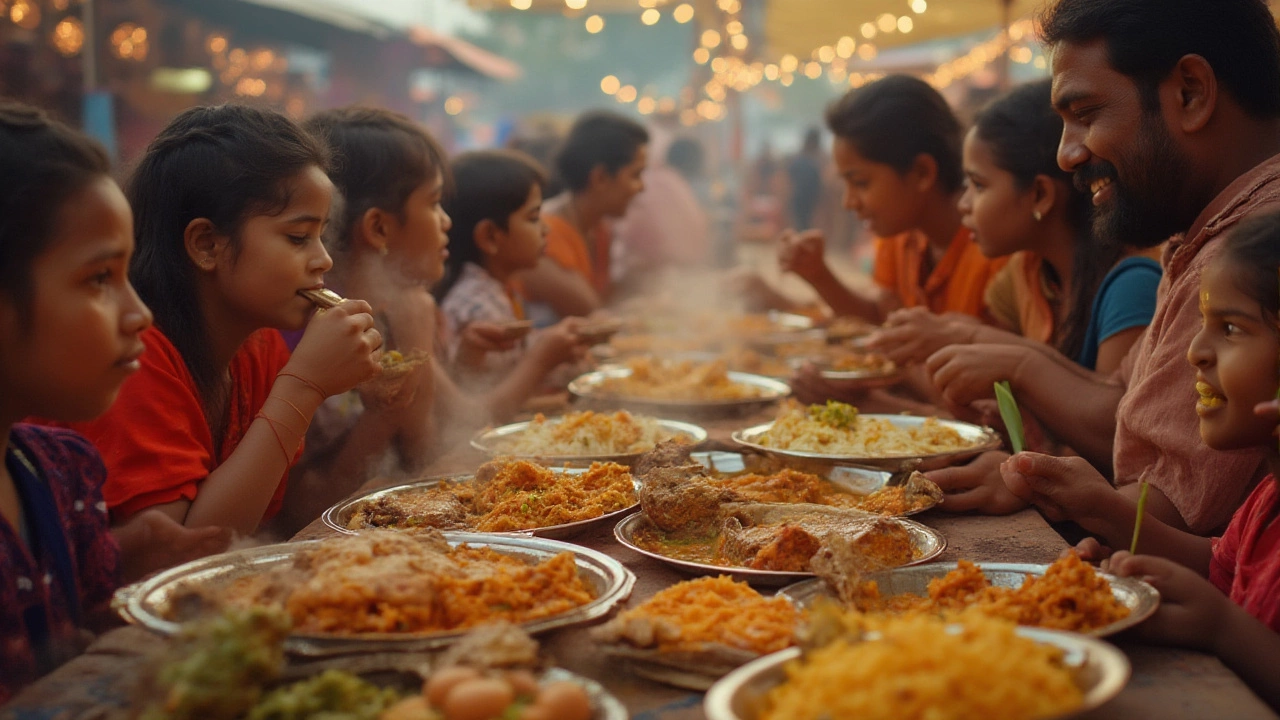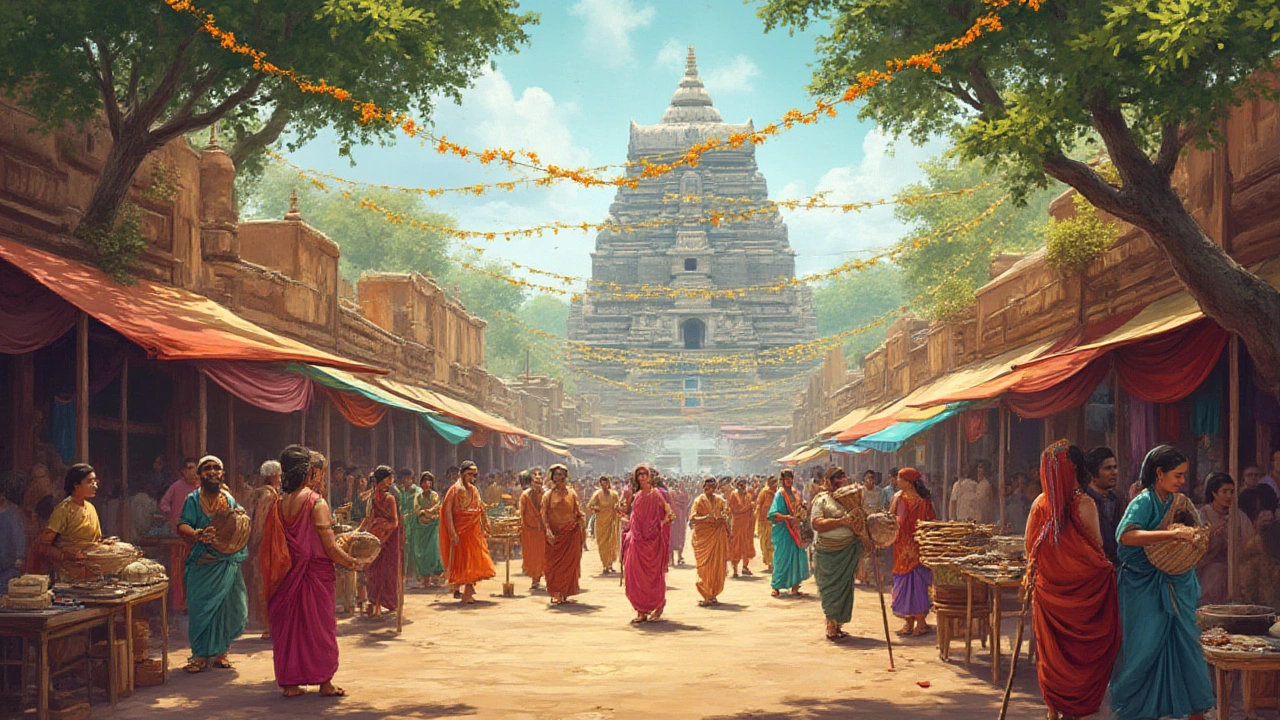Try walking down a street in Varanasi at sunrise, and you’ll see something dazzling: hundreds of people, from priests in saffron robes to curious travelers, following the rhythm of ancient rituals as the Ganges glimmers nearby. This isn’t just sightseeing. It’s the heartbeat of India’s cultural tourism—where travelers don’t just snap photos but actually soak up centuries-old traditions. India’s draw goes way beyond iconic monuments. What really pulls at the soul is its living, breathing culture—felt in its festivals, food, crafts, music, and people.
Historic Cities and UNESCO Heritage Sites
India packs more UNESCO World Heritage sites into its borders than most people realize. There are 42 as of 2025, putting India in the top ten countries worldwide. But it’s not just about numbers. You get palaces, forts, temples, and even entire cities that wear their past proudly on their sleeve. Jaipur, the Pink City, is a perfect example. Wander its old-town bazaars, and you’ll find yourself ducking into jewelry stores that have seen centuries pass by. Jaipur’s City Palace, Amber Fort, and the honeycomb facade of Hawa Mahal let you feel the power and vision of Rajput kings. Then you have Hampi, where crumbling stone temples and market streets sprawl across rocky landscapes, echoing stories of the Vijayanagara Empire.
Head east, and you reach Kolkata, dubbed "The City of Joy." The British colonial architecture mixes with Bengali art and literature in places like Victoria Memorial and College Street, once a hangout spot for legends like Rabindranath Tagore. Go further south to Madurai, and the Meenakshi Temple’s psychedelic towers, alive with sculptures, show how devotion mingles with daily life. Puducherry offers another kind of surprise—a slice of France in India’s tropical south, where pastel buildings and cafes spill onto tree-lined boulevards.
Let’s look at some stats. According to the Archaeological Survey of India, heritage sites in Rajasthan, Tamil Nadu, Uttar Pradesh, and Madhya Pradesh attract over 12 million visitors, both Indian and international, each year. Temple cities like Varanasi, Madurai, and Khajuraho are particularly popular with cultural tourists wanting to join religious festivals or watch sacred rituals up close.
| State/City | Popular Heritage Site | Annual Visitors (2024) |
|---|---|---|
| Rajasthan | Jaipur Forts | 2.8 million |
| Tamil Nadu | Meenakshi Temple | 1.7 million |
| Uttar Pradesh | Varanasi Ghats | 3.2 million |
| Karnataka | Hampi | 1.2 million |
Here’s a tip: join a heritage walk in any major city. These guided tours, often led by passionate locals, shine a light on details that solo tourists usually miss—the meaning behind a temple carving, a centuries-old secret passed down in an alley, or recipes guarded by royal kitchens. The magic of India’s historic culture isn’t just in what’s old, but in how it’s still alive and kicking.
Festivals That Celebrate Tradition and Identity
Festivals in India aren’t just about bursts of color and sweet treats. They’re windows into the country’s deep cultural roots. Walk into Diwali celebrations in Amritsar, where the Golden Temple glows with thousands of lamps, or watch crowds tossing clouds of colored powder during Holi in Mathura and Vrindavan. These are major magnets for travelers wanting to be part of the countrywide buzz. But there’s so much more tucked behind the big holidays.
Every region has its own line-up of festivals that attract people from all corners of the world. In Thrissur, Kerala, Thrissur Pooram lights up the town in May. Caparisoned elephants, drummers, and fireworks lull you into a trance. In Nagaland, the Hornbill Festival is a week-long celebration where indigenous tribes show off battle dances, folk songs, and tribal crafts. Rajasthan’s Pushkar Camel Fair brings together traders, mystics, and tourists all night under open skies, while Ladakh’s Hemis Festival turns monasteries into whirlwinds of masked dances and chant-filled rituals.
But what makes these events so appealing to cultural tourists? It’s the chance to be more than just a bystander. In Kolkata during Durga Puja, you get to wander into clay sculptors’ studios to watch gods and goddesses being molded from Ganges mud. If you stick around for the immersion, you might end up joining locals with drums as idols glide down the river. Down south, at Pongal in Tamil Nadu, you’ll find families drawing kolam (rice-flour designs) outside their homes and serving up bamboo-steamed delicacies to visitors—even total strangers.
There’s big business in festival tourism too. The Indian Ministry of Tourism estimates that over 30% of foreign travelers now time their visits to coincide with major festivals or spiritual gatherings. The Kumbh Mela, billed as the world’s largest peaceful gathering, attracted nearly 100 million participants in 2023—many of them on a spiritual and cultural quest, rather than on the usual tourist circuit.
- Plan ahead for festival trips; most hotels fill up a year in advance in places like Varanasi and Jaipur during peak festival weeks.
- Try volunteering at local community celebrations; many organizers welcome visitors, and you’ll walk away with an insider’s perspective.
- Bring a scarf or bandana—festivals can get dusty, colorful, or even smoky!
- Some festivals (like Pongal or Baisakhi) are rooted in harvest cycles and feature seasonal foods you can’t find at other times.
Sharing a meal with strangers, learning a traditional dance step, or joining an art workshop mid-festival—these things don’t just look good on Instagram. They change you, and that’s why travelers keep coming back for more.

Traditional Arts, Crafts, and Performances
If shopping at malls puts you to sleep, India’s handloom villages, artist colonies, and music towns will jolt you awake. The soul of cultural tourism here is in the hands of craftspeople. Take Rajasthan’s blue pottery, Odisha’s silver filigree, or Kutch’s mirrorwork fabrics—each is tied to a community, a ritual, or even a royal court. Step into Shantiniketan in West Bengal, founded by Rabindranath Tagore, and you’ll stumble into open-air classrooms where music, dance, batik-painting, and clay modeling mingle beneath giant banyan trees.
The experience is more than buying souvenirs. Places like Kutch (Gujarat) and Raghurajpur (Odisha) let you join workshops, where you learn how to paint Pattachitra scrolls or tie-dye a bandhani scarf. In Goa, Fontainhas’ winding lanes host art walks where local musicians, poets, and painters turn walls into stories on canvas.
Performance art forms are another line into India’s cultural heart. Kerala’s Kathakali dancers put on three-hour shows, telling epic tales from the Mahabharata, their faces painted in wild green and red. Tamil Nadu gives you the fire-tinged drama of therukoothu street theater, while Manipur tells love stories through delicate hand gestures in Manipuri dance.
How much of this is still thriving? Here’s where it gets interesting. According to a 2023 government report, direct cultural tourism employs over 7 million people, with crafts turning in export earnings worth $4.3 billion last year. This keeps old communities alive. Communes like Dastkar in Delhi or artisan collectives in Jaipur have revived vanishing skills by connecting rural artists to city markets and curious tourists.
- Look up open studio days before you travel—local craftspeople are usually happy to share their know-how in person.
- Don’t be shy to try (or fail) at making your own painted block print saree—experimentation is part of the fun.
- Many government emporiums or NGOs offer tours where the money you spend actually goes back to the artisan communities.
- Live-music bar in Kolkata? Book a Baul folk music night for something truly local and raw.
Street art festivals in Chennai and Kochi, annual classical music concerts during the Chennai December Season, and the riotous Hornbill Rock Contest in Nagaland all show that India’s traditional culture keeps evolving rather than standing still. Just remember, the best way to experience this isn’t from the edge but right in the messy, vibrant middle.
Food Trails and Culinary Journeys
There’s no better way to tap into a region’s identity than through its food. Indian cuisine is so much more than butter chicken and naan. Each state, sometimes each family, brings its own flavor to the table. Cultural tourists in India get to eat their way through everything from fiery Chettinad curries in Tamil Nadu to the cool, coconut-rich stews of Kerala. Street food in Mumbai, with vada pavs and bhel puri, gives you high-octane bursts of flavor with every bite. Up in Punjab, roadside dhabas serve smoky dal makhani straight from coal ovens to plastic plates, with truck drivers and suit-wearing executives at neighboring tables.
If you’re craving adventure, try a Hyderabadi biryani trail: each restaurant claims their biryani is the original, but the truth is, every bite is its own unique story. Or in West Bengal, spend an afternoon tasting Bengali sweets—from sandesh to mishti doi—while an old-timer at a local sweet shop tells you why there’s no such thing as "too sweet" here.
Why does this matter for cultural tourism? Because meals are deeply social. Invitations for a chai on a stranger’s porch, or a cooking lesson in a farmhouse in Himachal Pradesh, break down barriers fast. In fact, loads of travel companies now offer ‘food walks’ in cities like Delhi, Lucknow, Amritsar, and Ahmedabad. A recent survey by India’s National Restaurant Association found that up to 40% of inbound travelers now list food as a main reason for visiting India—no surprise once you’ve had your fifth samosa in a row.
Here’s a handy tip: local markets aren’t just for shopping. Early mornings in Old Delhi’s Khari Baoli—the largest spice market in Asia—are an all-out sensory adventure. Bring a notebook to jot down recipes from street vendors, or download a language app to help you understand what’s bubbling in those clay pots.
- Vegetarian? Easy—most Indian regional cuisines have vegetarian specialties by default.
- Spice tolerance low? Ask for dishes 'mild' or try coconut-based food from south India first.
- Want authentic? Skip the fancy restaurants and eat where the locals go. Try langar (community meal) at a gurdwara for a soulful, communal experience.
- Watch out for water—always choose sealed bottles if you're not used to local water sources.
There’s just something magical about sitting cross-legged on a mat, scooping up rice and dal with your hands, surrounded by a host family in a remote Rajasthan village. That’s not just dinner—it’s an invitation into a way of life. It’s these moments—big festivals, bustling markets, backyard kitchen chats—that turn travelers into lifelong fans of India’s cultural tourism scene.
